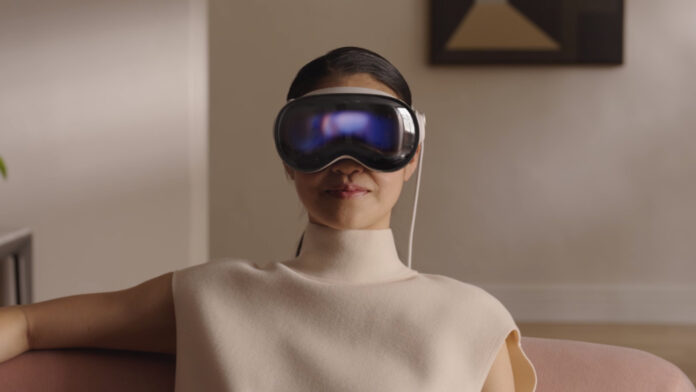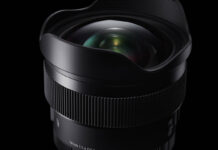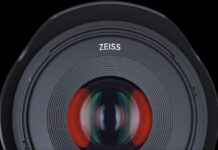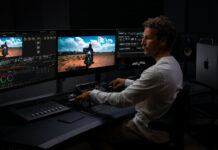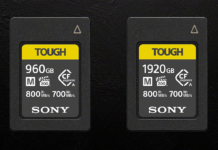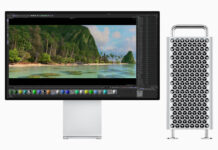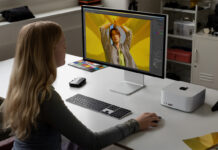Apple has unveiled a new augmented reality headset, Apple Vision Pro. Apple calls the device a “revolutionary spatial computer.”
Design
The Apple Vision Pro headset looks like a large pair of ski goggles. It also has a separate battery pack connected by a cable. The frame of the headset is made of aluminum and the front is glass. There is also a soft textile Light Seal around the frame so that it fits a wide range of face shapes. In addition, the Head Band strap of the Vision Pro is three-dimensionally knitted as a single piece to provide cushioning, breathability, and stretch.
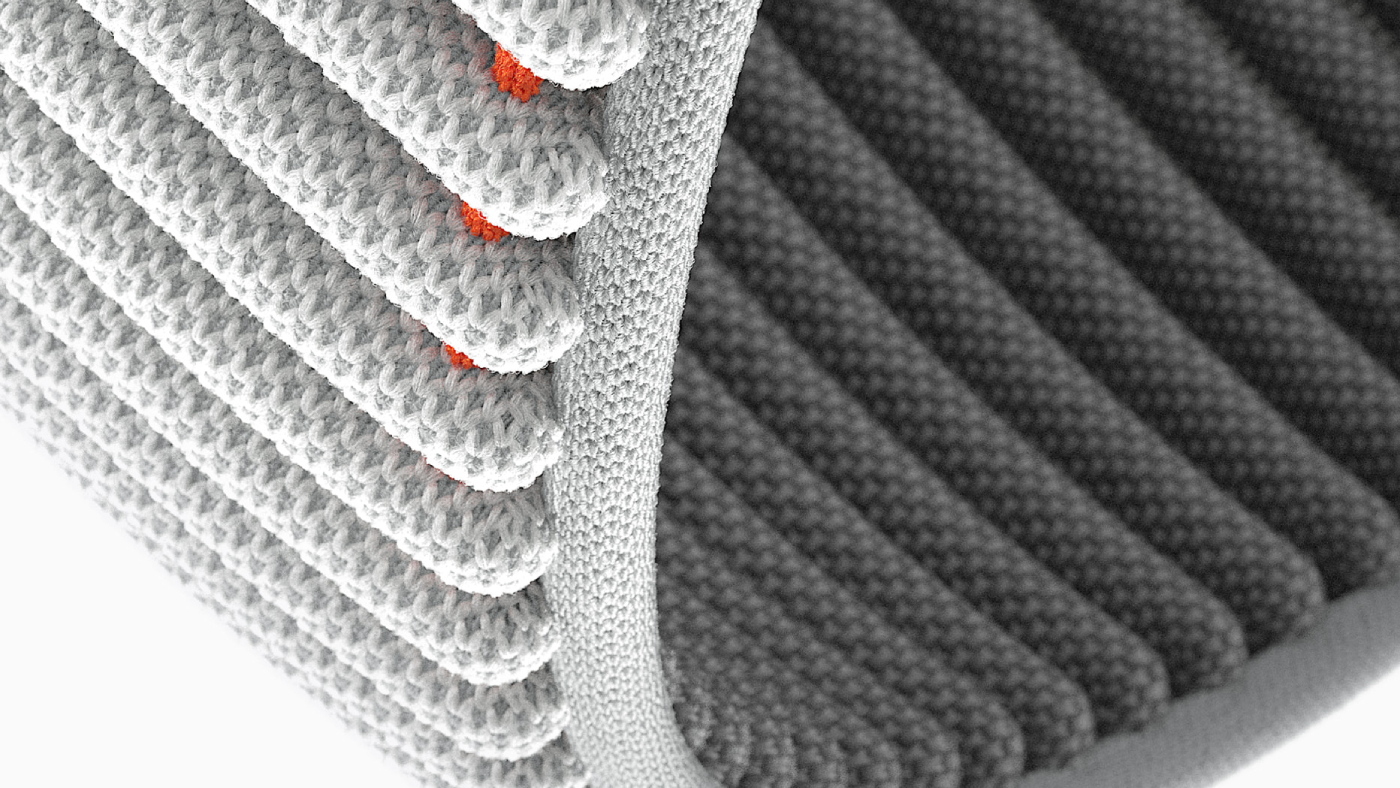
High-resolution display
In addition, the Vision Pro incorporates an ultra-high resolution display system that has 23 million pixels across two micro-OLED displays. This means you have got more resolution than a 4K television for each eye. Note that if you wear corrective glasses then you may need to add specially designed ZEISS optical inserts to use Vision Pro. The system will run for two hours when powered by its battery, or you can plug it in for all-day use.
Apple silicon
The Vision Pro is powered by Apple silicon, with an M2 chip supported by a brand-new R1 chip. All of this computing power is used to process input from two cameras, five sensors, and six microphones. The R1 chip also streams new images to the displays in under 12 milliseconds which Apple says is eight times faster than the blink of an eye. In addition, Vision Pro uses an advanced Spatial Audio system to create the feeling that sounds are coming from the environment around you.
How it works
Vision Pro uses a new operating system called visionOS. The headset doesn’t have a separate controller as you can browse apps by simply looking at their icons. The eye-tracking system uses high-speed cameras and a ring of LEDs that project invisible light patterns onto your face. You can also tap your fingers to select, flick your wrist to scroll, and use your voice to dictate. In addition, the EyeSight feature means that the Vision Pro display feels transparent when someone approaches you. This means you can see them, and they can see your eyes.
Augmented reality
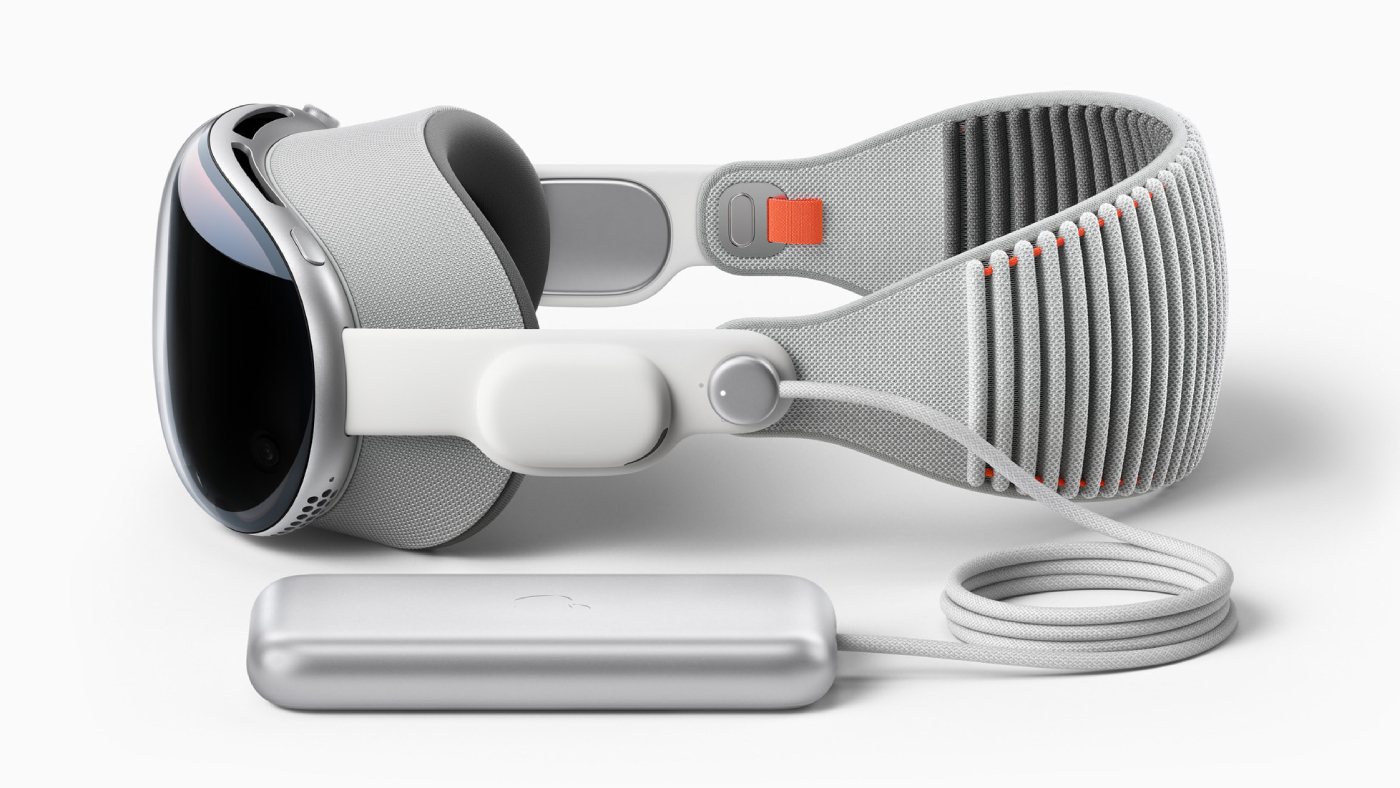
As an augmented reality (AR) device, Vision Pro will overlay images and video over the world around you. You can also use it as a full virtual reality (VR) device. As an AR device, you can transform any space into your own personal movie theater with a screen that feels 100 feet wide. In addition, if you display a Panorama that was shot on iPhone, it will expand and wrap around you. FaceTime calls display people on the call as life-size tiles around your room. The Spatial Audio also makes it sound as if participants are speaking right from where they are positioned.
What we think
The Apple Vision Pro is an amazing piece of kit. It’s range of features and the complexity of what the technology is achieving can’t be overstated. However, the augmented reality and virtual reality world still haven’t taken off the way that Apple and Meta have hoped. It’s clear from the announcement of the Vision Pro that Apple, like Meta, is continuing to invest heavily in AR and VR. Whether the technologies will be more widely adopted remains to be seen, and the high price tag of Vision Pro will put off a lot of people. We will have to wait and see what happens when Vision Pro finally launches next year.
Availability
Pricing for Apple Vision Pro starts from $3499. The system will be launched in the US early next year and will then be rolled out to other markets later in the year.

